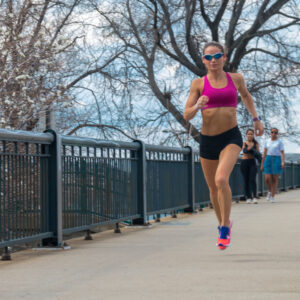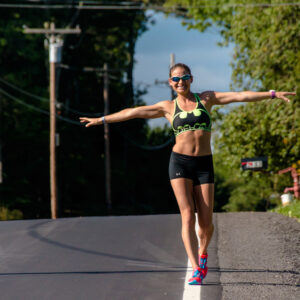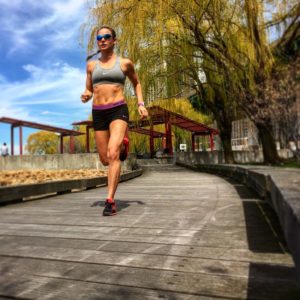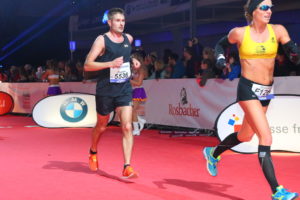 As athletes, we are constantly balancing load and capacity – the training for goals and the external factors. When the balance is off, injury risk rises, athletes burn out, and fitness tends to plateau. One of the priorities of the coach: keeping things in balance so that the athlete can achieve their goals. The challenge: some of the capacity will depend on personal scenarios to that runner. The coach and athlete have to be communicating so that the balance works.
As athletes, we are constantly balancing load and capacity – the training for goals and the external factors. When the balance is off, injury risk rises, athletes burn out, and fitness tends to plateau. One of the priorities of the coach: keeping things in balance so that the athlete can achieve their goals. The challenge: some of the capacity will depend on personal scenarios to that runner. The coach and athlete have to be communicating so that the balance works.
This is why (and I cannot stress this enough), using a cookie cutter plan online or bumming your friend’s training plan probably won’t serve you well, and can actually harm you. A coach is constantly adjusting things based on the feedback and communication from that athlete. This is also why it’s paramount you communicate with your coach – them seeing data without knowing how the workouts are feeling is only sharing part of the picture.
Here are things your coach (and you!) should be working on:
- Building mileage and fitness for the goal
- Consistency in training – locking in a plan
- Building strength and running economy
- Getting rest to allow for super-compensation
- Keeping injuries, aches and pains at bay
- Maintaining an element of fun
- Confidence and mental strength grow as fitness improves
- Educate athlete on training principals, fueling, pacing, etc.
Here are the possible challenges that will directly impact the above:
- Stress/anxiety in the personal life
- Poor sleep (less than 7 hours is proven to be where adaption will be compromised)
- Illness
- Poor nutrition (not getting enough calories or the right things)
- Lack of focus and commitment (could be caused by stress, a few bad workouts, and more)
This year, without in-person races but with a TON of added stress for the mass general public, perhaps this balance is harder than average to control.
While I hope your life hasn’t been seriously impacted by the pandemic, I think it’s safe to say all of our lives have been touched by now – losing a loved one, losing a job or reduced salary, change in lifestyle (social life, theater, sporting events, bars/restaurants), losing your training routine (maybe a gym, group fitness class, running group), losing all race goals, simply stressed due to the political climate – and if you’ve checked each one of those boxes, the odds are good your sleep sucks and you’re living through anxiety.
Running (and fitness in general) has been championed as a mood enhancer, stress reliever, and emotional outlet. But if you’re not sleeping, you may notice your fitness performance has been compromised. It’s a cyclical problem – you need sleep to run well, and running regulates sleep habits.
If you’re shaking your head that this is personally resonating, my advice is to take in a big inhale – and then a VERY big exhale. This reality isn’t normal. Sometimes just doing your best has to be enough. Let go of a speed or distance goal, and allow running to simply and purely be a source of joy. The external stresses as of late are well beyond anything we’ve navigated before, so don’t be so hard on yourself.
A coach is a good person to discuss these challenges with, and they may be able to restructure your calendar and expectations of the workouts. Right now, we need running more than ever. Though the role may need to change temporarily.
 This blog was a long time coming, and is the result of things I’ve witnessed over the years – but especially during the pandemic. My guess is during the pandemic fitness enthusiasts are bored and perhaps looking to break into the training/coaching world, or simply want to connect with others through their passions. Their intentions are good, and some do offer solid advice. But for every enthusiast who may share something that’s overall harmless and potentially helpful, they’ve muddied the water with who is actually qualified to post as an expert.
This blog was a long time coming, and is the result of things I’ve witnessed over the years – but especially during the pandemic. My guess is during the pandemic fitness enthusiasts are bored and perhaps looking to break into the training/coaching world, or simply want to connect with others through their passions. Their intentions are good, and some do offer solid advice. But for every enthusiast who may share something that’s overall harmless and potentially helpful, they’ve muddied the water with who is actually qualified to post as an expert. Dear Runners, we need to talk. The statistics with runners and injuries is enough to make someone not want to lace up. However, much of the injuries runners encounter are 100% preventable. Sure, there’s a percent of runners who will be injury-prone for reasons they cannot control – one leg slightly longer than the other, a trauma from years ago, overuse from a childhood activity, and poor genetics. But that’s a small percent of runners. YOU are often responsible for those aches and pains. This isn’t about pointing blame, but informing, educating and perhaps preventing injuries in the future by making different choices.
Dear Runners, we need to talk. The statistics with runners and injuries is enough to make someone not want to lace up. However, much of the injuries runners encounter are 100% preventable. Sure, there’s a percent of runners who will be injury-prone for reasons they cannot control – one leg slightly longer than the other, a trauma from years ago, overuse from a childhood activity, and poor genetics. But that’s a small percent of runners. YOU are often responsible for those aches and pains. This isn’t about pointing blame, but informing, educating and perhaps preventing injuries in the future by making different choices. As most have heard, the weather on Patriot’s Day was anything but kind. Marathoners are pretty tough people, and Monday demanded our mental strength to carry when our bodies succumbed to the elements. I often preach to my runners that they need to learn to train in most elements because we never know what we’ll be handed by Mother Nature on race day. Monday was a reminder of that. Not surprisingly, the runners I know who preformed best were the Winter Warriors and the Ultra Marathoners.
As most have heard, the weather on Patriot’s Day was anything but kind. Marathoners are pretty tough people, and Monday demanded our mental strength to carry when our bodies succumbed to the elements. I often preach to my runners that they need to learn to train in most elements because we never know what we’ll be handed by Mother Nature on race day. Monday was a reminder of that. Not surprisingly, the runners I know who preformed best were the Winter Warriors and the Ultra Marathoners. My calves felt like they were on the verge of cramping due to the cold around mile 14. I did everything I could to prevent cramping from happening, which meant changing my stride, form and pace in the late miles. I knew I was better off adding a minute to each mile than cramping and needing walk and stretching breaks in the elements. At the finish, I could barely lift my legs. My hips were in incredible pain, so cold and tight, and I wasn’t confident I’d make it to my hotel without a wheelchair ride to medical. Marni and the cup of hot cocoa at the finish line were the only reason I didn’t end up in a wheelchair.
My calves felt like they were on the verge of cramping due to the cold around mile 14. I did everything I could to prevent cramping from happening, which meant changing my stride, form and pace in the late miles. I knew I was better off adding a minute to each mile than cramping and needing walk and stretching breaks in the elements. At the finish, I could barely lift my legs. My hips were in incredible pain, so cold and tight, and I wasn’t confident I’d make it to my hotel without a wheelchair ride to medical. Marni and the cup of hot cocoa at the finish line were the only reason I didn’t end up in a wheelchair. First and foremost, I apologize for neglecting my blog for much of 2017. That’s about to change! Second, it has been an incredible year. I am so humbled and proud of the hard work my roster have brought to the table. It’s an honor to do what I do every day.
First and foremost, I apologize for neglecting my blog for much of 2017. That’s about to change! Second, it has been an incredible year. I am so humbled and proud of the hard work my roster have brought to the table. It’s an honor to do what I do every day. I would absolutely recommend Frankfurt Marathon to anyone looking for a flat and fast marathon. It was a pretty amazing day. And the days following the marathon were really fun. Food and drink is everywhere. If you enjoy baked goods and beer, Germany is for you. Frankfurt is an incredibly friendly city to travelers from all over the globe.
I would absolutely recommend Frankfurt Marathon to anyone looking for a flat and fast marathon. It was a pretty amazing day. And the days following the marathon were really fun. Food and drink is everywhere. If you enjoy baked goods and beer, Germany is for you. Frankfurt is an incredibly friendly city to travelers from all over the globe.


